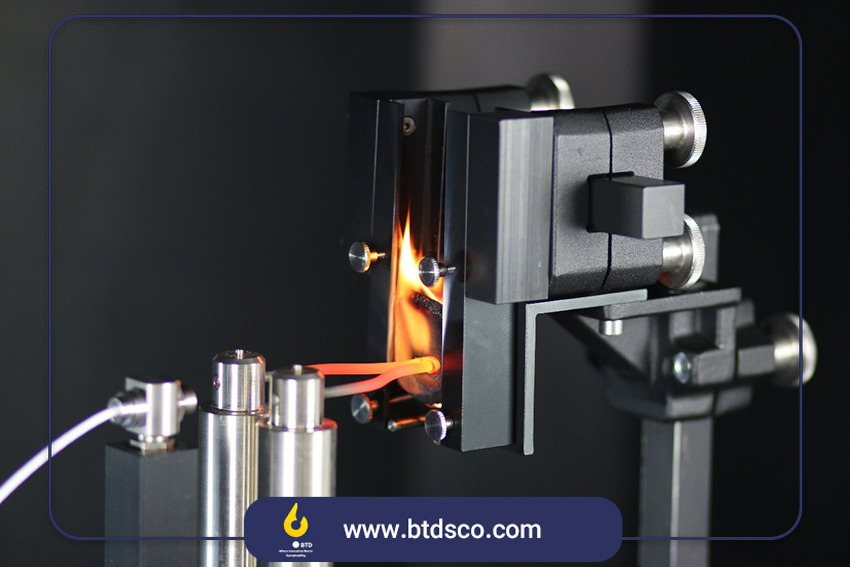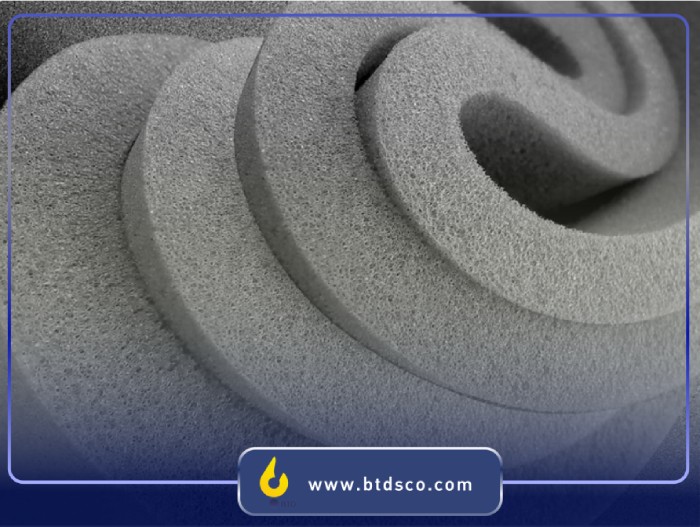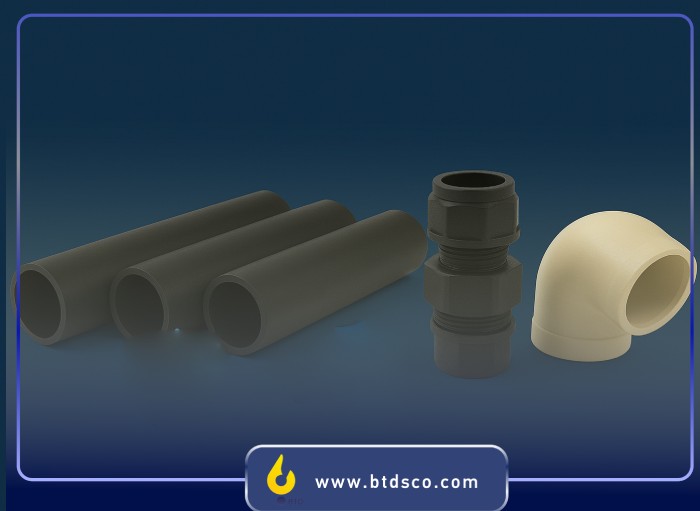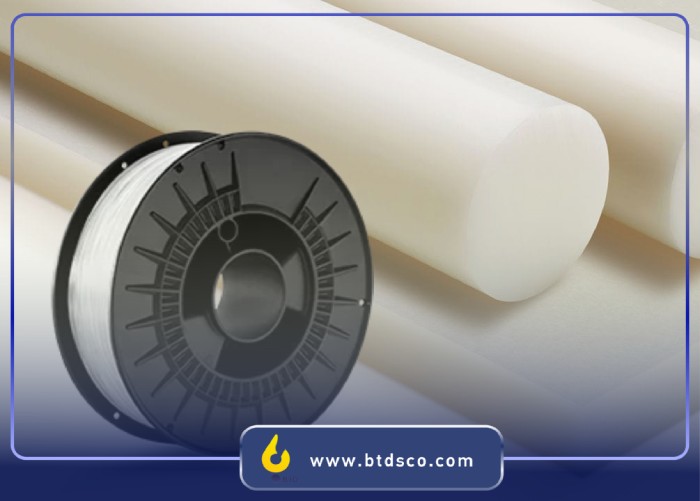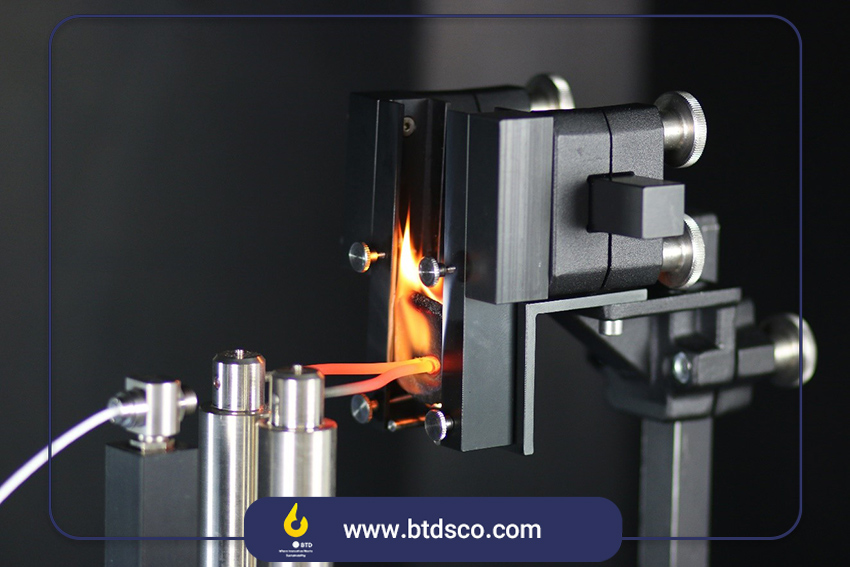Introduction to polyamide: types, properties and diverse applications
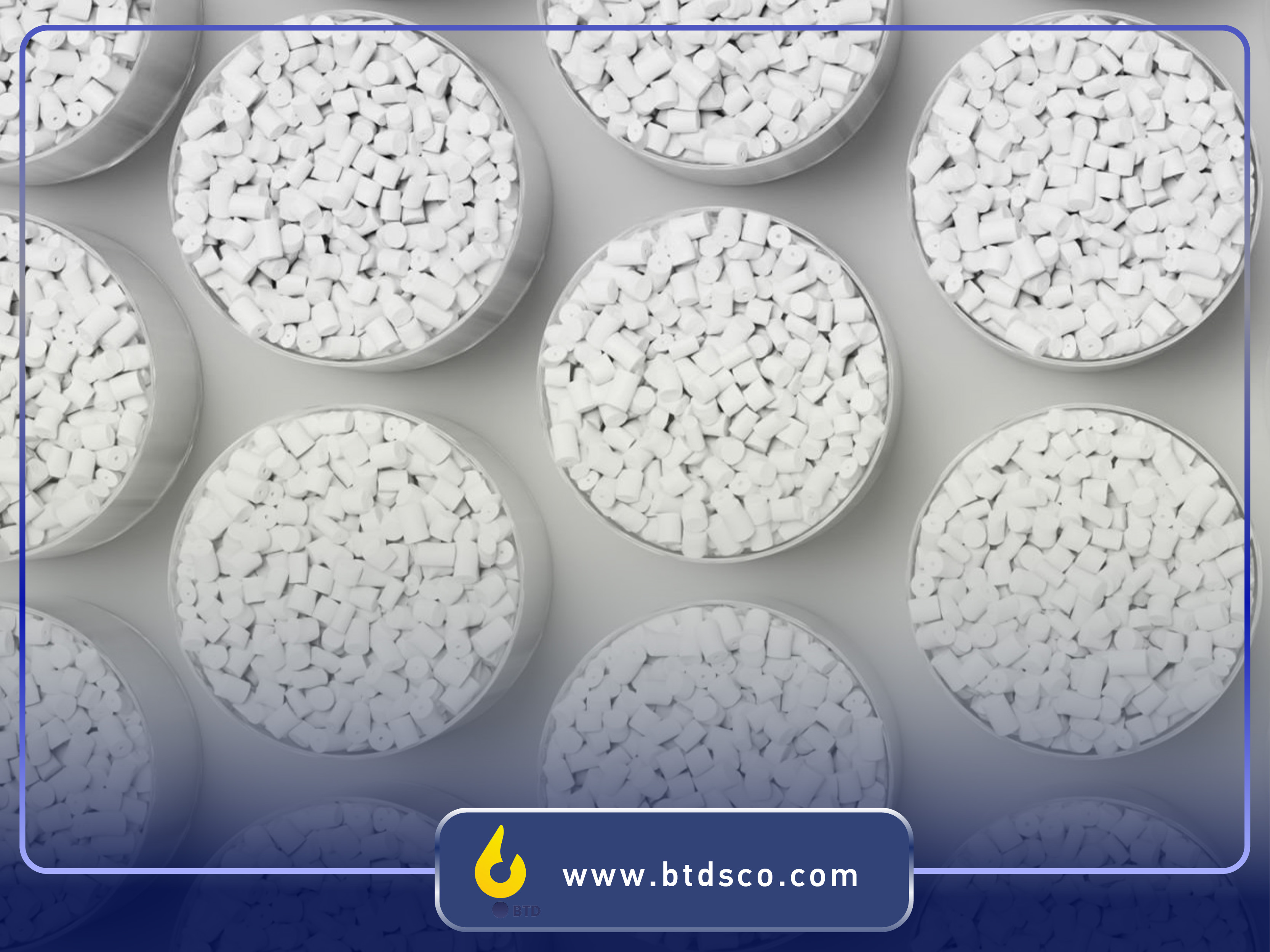
Polyamide, also known as Nylon, is a group of synthetic polymers formed by linking structural units called amide groups, which typically result from the reaction between an amine group and a carboxylic acid group. These polymers are widely used in various industries due to their excellent properties, such as high abrasion resistance, impact resistance, thermal stability, and chemical resistance. Polyamides are high-performance thermoplastics that are used not only in injection molding processes to manufacture parts but also in extrusion processes to make sheets, rods, and pipes. This polymer was first patented in the 1930s by DuPont, and since then, it has been applied in numerous industrial and engineering fields.
Due to their semi-crystalline structure, polyamides possess unique features, including high mechanical strength, flammability, processability, sterilization capability, and high moisture absorption. The crystallinity of polyamides plays an important role in determining their properties, such as increasing yield stress, chemical resistance, melting point, and elasticity as the crystallinity percentage increases. However, properties like dielectric constant, insulation properties, transparency, and moisture absorption decrease. These characteristics make polyamides versatile materials for various industrial and engineering applications.
Types of Polyamide
Polyamides are a group of synthetic polymers with diverse chemical and mechanical properties, which give them widespread applications in various industries. Due to their chain-like structure and amide group, polyamides exhibit unique properties such as resistance to heat, wear, and chemicals. Notable polyamides like Polyamide 6, Polyamide 66, Polyamide 11, and Polyamide 12 are key materials in engineering and industrial fields.
Polyamide 6 (PA6)
Polyamide 6, also known as Nylon 6, is produced from the monomer caprolactam. This polyamide has properties such as high mechanical and thermal resistance, flexibility, and tensile strength. Its applications include the production of fibers, tapes, automotive parts, and various consumer products.
Polyamide 66 (PA66)
Polyamide 66 is produced from the monomers adipic acid and hexamethylenediamine. This material is known for its very high thermal resistance, excellent tensile strength, and durability. It is used in the production of automotive parts, synthetic fibers for textiles, and electrical and electronic components.
Polyamide 11 (PA11)
Polyamide 11, also known as Nylon 11, is used due to its resistance to chemicals, flexibility, and high strength. It is applied in natural gas pipe manufacturing, hydraulic components, and engineering equipment. This material performs well under harsh environmental conditions.
Polyamide 12 (PA12)
Polyamide 12 is made from the monomer dodecanedioic acid. Due to its high flexibility, chemical resistance, and heat resistance, it is used in industries such as the production of hydraulic hoses, rubber, toothpaste, and household items.
Strengths and Weaknesses of Polyamides
Strengths:
-
High tensile and compressive strength
-
Excellent surface hardness
-
Very resistant to wear
-
Resistant to strain due to strong physical bonding with fibers
-
High static impact strength
-
Excellent long-term heat resistance up to 180°C
-
Low electrical and thermal conductivity
-
Good dimensional stability due to chemical resistance to resins and solvents
Weaknesses:
-
Water and moisture absorption
-
Lower light transmission
-
Reduced toughness of molded parts
Reinforced Polyamide Compounds
Reinforced polyamide 6 compounds, especially with glass fibers, have been developed in recent years to address the shortcomings of pure polyamide and enhance its physical and mechanical properties, such as tensile strength, impact resistance, and heat resistance. Glass fibers, due to their excellent compatibility and strong physical interactions with polymers, are widely used in engineering and manufacturing industries. For instance, adding glass powder or fibers strengthens and hardens pure polyamide, increasing the material's modulus by up to 80%, tensile strength by up to 70%, and surface hardness by up to 50%.
Applications of Polyamide Compounds
Due to their outstanding properties such as high resistance to heat, wear, tensile strength, and chemicals, polyamides are used in various industries, including automotive, electronics, household appliances, medical, textiles, and packaging. These materials play a crucial role in producing high-quality and durable products and are capable of meeting the complex needs of industries.
Automotive Industry
In the automotive industry, polyamide compounds are used for parts such as gear shifters, interior panels, pipes, and engine components due to their light weight and high resistance to heat and pressure. These materials not only reduce the vehicle's weight but also improve the efficiency and lifespan of the parts.
Electronics Industry
Polyamide compounds are used in the electronics industry due to their excellent electrical insulation properties and high heat tolerance. They are used in the production of cables, printed circuit boards, lamp bases, miniature switches, and electronic components, ensuring safe and reliable operation of electronic equipment.
Household Appliances
Polyamide compounds are widely used in household appliances, such as in the body and internal components, due to their excellent physical and mechanical properties and lower weight compared to metals. As a result, polyamide compounds are among the most commonly used plastics in the household appliance industry.
Packaging Industry
Due to their resistance to moisture and chemicals, polyamides are used in producing packaging films and protective layers. These properties help preserve the quality and extend the shelf life of packaged products.
Textile Industry
Polyamides, especially Nylon, are used in textiles due to their high resistance to wear and tear. They are used in the production of clothing such as socks, sportswear, and durable fabrics. They are also used in the production of carpets and rugs, enhancing their durability.
Medical Industry
Polyamides are used in the medical industry for producing surgical tools, prosthetics, medical tubing, and hygienic packaging due to their chemical resistance and sterilization capabilities. These materials improve the safety and functionality of medical equipment.
Processing Conditions
The production of polyamide parts involves several factors such as the nature of the raw material, type and amount of reinforcement, melt temperature, mold temperature, and part thickness. Below are some key processing parameters for polyamide injection molding:
-
The ideal screw length-to-diameter ratio for injection molding is 18:22.
-
The melt temperature ranges from 240°C to 270°C.
-
The mold temperature should be controlled between 55°C and 80°C.
-
Injection pressure typically ranges from 750 to 1250 bars.
Comparison of Polyamide Compounds with Other Engineering Polymers
Polyamide (PA) compounds are among the best options for engineering parts due to their thermal resistance, strength, and abrasion resistance. They are widely used in automotive, electronics, and railway industries. Other polymers like polypropylene (PP) and polyethylene (PE) are more cost-effective and offer better chemical resistance but perform weaker under heat and wear compared to polyamide.
Polycarbonate (PC) compounds are used in industries requiring transparency and impact resistance. Polystyrene (PS) is a more economical polymer but is weaker under stress compared to polyamide.
Conclusion
Polyamides, with their unique properties such as high mechanical, thermal, and chemical resistance, play a key role in the development of technologies and industries. These materials offer customization based on industrial needs, making them a reliable choice for manufacturers. Companies like Baspar Tose’e Dovam Shimi, with advanced knowledge and technology, are leading in producing and supplying polyamide materials and strive to meet the diverse needs of industries with high-quality products. Collaborating with such companies can significantly contribute to the advancement of industrial and economic goals.
FAQs
What is polyamide and what are its applications?
Polyamides are a category of engineering polymers that are widely used due to their high resistance to heat, wear, and chemicals. They have broad applications in industries such as textiles, automotive, medical, and electronics.
What is the difference between polyamide 6 and polyamide 66?
Polyamide 66 has higher thermal resistance and tensile strength compared to polyamide 6, while polyamide 6 offers higher flexibility and easier processability.
Why do polyamides absorb moisture?
Polyamides have amide groups in their chemical structure, which tend to absorb moisture from the environment, affecting their mechanical and physical properties.
What are the main advantages and disadvantages of polyamides?
Advantages include high strength, thermal resistance, and wear resistance. The main disadvantages are high moisture absorption and flammability, which may need to be improved for certain applications.
Recent Articles
